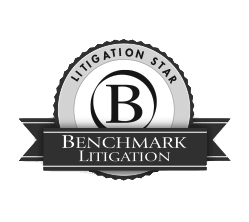Feeding Tube Complications Include Pneumothorax and More
Call 410-825-5287 for a free medical malpractice consultation

Tube feeding is considered a cornerstone of care for many critically ill or injured patients, yet as many as 15 percent of all nasogastric tubes are mistakenly pushed into a patient's bronchial tubes, lungs or even cranium in rare cases. Depending on the path of an incorrectly placed feeding tube, complications such as pneumothorax and other pleural issues, aspiration of formula, and even death may occur. Technological advances have led to the development of three FDA approved enteral access systems (EAS's) intended to reduce the chance of feeding tube misplacement, yet such devices do not eliminate risk. Sadly, alternatives to tube feeding, including hand feeding in those who are able to swallow, are rarely suggested and patients are often left in the dark about the short and long term risks associated with enteral feeding in general.
Incorrect Placement: Complications of Nasogastric Tube Feeding
Nasogastric tubes are intended to deliver liquid formula and/or medication(s) directly into the stomach of patients who are unable to chew and/or swallow sufficient amounts of food to meet their metabolic requirements. A properly placed feeding tube enters through one of the nostrils and is passed into the esophagus; from there, the tube must be inserted deep enough to reach the patient's stomach. Because these tubes are placed "blindly", however, passage into the person's bronchial tubes, lungs and even cranium are possible and may result in severe complications including death. Tubes which are initially placed correctly still have the potential to partially slide out of the body; when this occurs, the end has likely risen out of the stomach and into the esophagus, placing the patient at risk of aspiration. Clinicians must be vigilant in verifying the correct location of the tube prior to each and every feeding.
Feeding Tube Placement, Removal Complications
Numerous complications may arise during or after the placement of a feeding tube, including:
- Pneumothorax. Many feeding tubes contain a stiff wire guide to aid in the initial placement. Guides that are accidentally pushed into the pleural space, however, have the potential to puncture lung tissue and cause a collapsed lung or pneumothorax. Although most patients recover from this injury after treatment, pneumothorax is a serious complication which can lead to death in compromised patients.
- Pleural effusion. Punctures to the lung tissue may also result in fluid leakage between the lungs and chest cavity, leading to pleural effusion and its associated complications including infection and lung scarring.
- Choking and aspiration of formula. When a feeding tube correctly enters the esophagus but is not inserted far enough to reach the stomach, patients run the risk of choking and/or aspirating liquid formula into their lungs, increasing the risk of potentially deadly pneumonia.
- Entrance into the cranium. In rare cases, feeding tubes can be pushed into a patient's cranium, typically resulting in rapid death. Because this complication is more likely to occur in conjunction with a fractured skull, feeding tubes are no longer recommended for use in trauma patients. At least one case of brain damage and death from feeding tube passage into the cranium of a non-trauma patient has been reported, validating this rare yet lethal complication.
FDA Approved EAS Systems Do Not Eliminate Risk
Three FDA approved devices which utilize technology including cameras and/or high tech sensors are now in use to aid in the proper insertion of feeding tubes. The cameras or sensors allow the clinician to observe the track the tube is following and are designed to eliminate the risks of "blind" insertion. Between 2012 and 2017, however, 51 pneumothorax events associated with these devices have been reported to the FDA and sadly, 11 of the individuals involved lost their lives as a result. The FDA is now advising that EAS systems only be used in specific situations with properly trained clinicians who understand the potential risks of any tubal feeding device.
Long Term Risks of Enteral Feeding
In some cases, feeding tubes are used as a long term method for delivery of nutrition. The decision to continue enteral feeding for an extended period of time is often made without informed consent as many people are told that feeding tubes are safe for an indefinite period of time. Feeding tube complications, including a condition known as nasogastric syndrome, do exist and may cause infection and/or ulceration to the back side of the trachea. Such injuries can lead to serious vocal cord damage and even death as a result of respiratory compromise. Although the number of reported nasogastric syndrome cases is small, patients should nonetheless be given full disclosure of risk along with any possible alternatives before consenting to this medical procedure.
Hand Feeding a Better Option in Some Cases
Perhaps in part due to lack of educational resources, few clinicians suggest hand feeding as an alternative in patients with the ability to swallow normally. People with dementia are usually good candidates for hand feeding, yet enteral feeding is often used as a long term solution to deliver nutrition. Hand feeding does more than just eliminate the risks associated with short and long term feeding tube use; it also provides an opportunity to maintain the pleasure of eating and fosters a stronger bond between patient and caregiver. The quality of nutrition delivered is superior, as fresh foods can be blended and fed in liquefied form as opposed to relying on mass produced formulas containing chemically manufactured ingredients.
Time to Demand a Higher Standard of Care
As is typically the case with any procedure, it's important that patients and/or their caregivers question all medical recommendations, including those presented in the form of a requirement with no alternative. Ultimately, we are all responsible for our own health and demanding a higher standard of care from our medical providers will lead to improved outcomes for all involved.
Accolades for Weltchek Mallahan & Weltchek
OVER $600 MILLION IN VERDICTS & SETTLEMENTS FOR OUR CLIENTS




